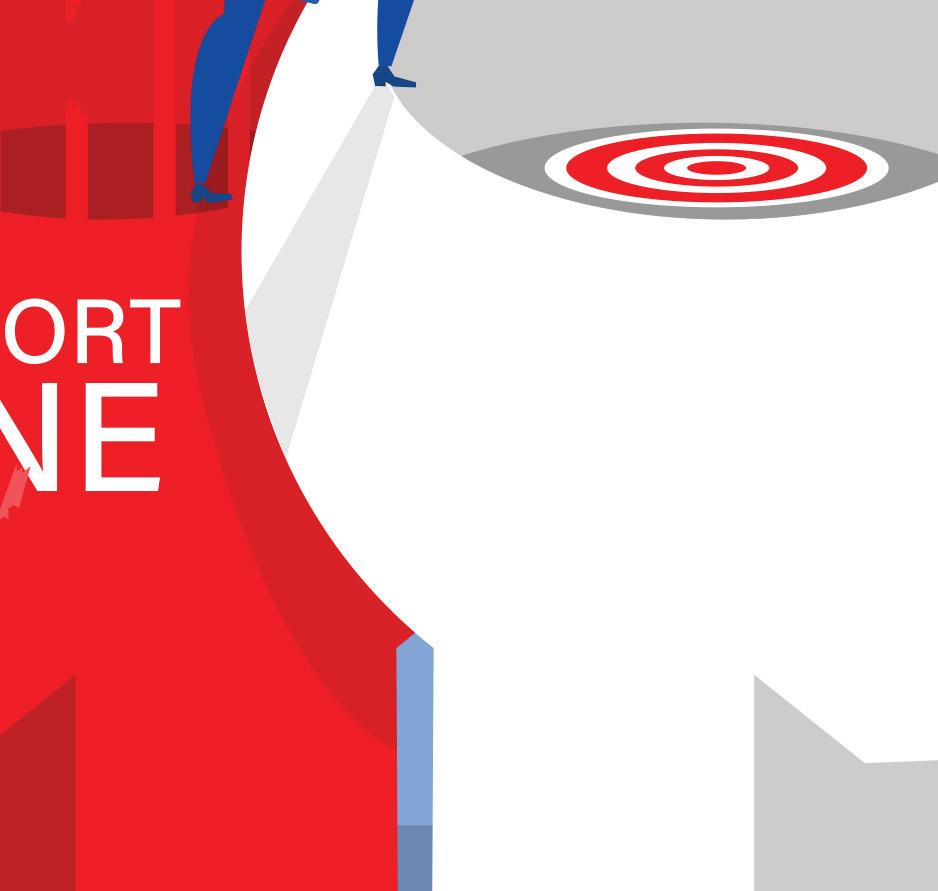
30 minute read
SBM Bank: Staying relevant in an evolving environment
SBM Bank (Mauritius) Ltd has recently won two awards 'Best Private Bank – Mauritius 2022' and 'Best Retail Customer Services Bank – Mauritius 2022' at International Finance Magazine awards 2022
Strategically located at the crossroads between Africa and Asia, Mauritius has built an enviable reputation as an international financial hub. As one of the leading financial service providers in Mauritius, SBM Bank (Mauritius) Ltd is committed to playing an important role in promoting the country’s position as an economically sound and resilient destination for business and investment. Almost half a century after its creation, SBM Bank is rightly perceived as a Bank of the people, for the people, and by the people.
In the 1970s and early 1980s, SBM was the first major banking institution in Mauritius to operate a mobile unit whose task was to go to remote villages around the island where residents didn’t have any access to banking services, and much fewer banking facilities. During the same time, the Bank, as a proponent of socio-economic development, embarked on the setting up of physical branches in the same spirit of bringing banking to the people. In so doing, SBM Bank has greatly contributed to increasing the number of bank account holders in the country while constantly ramping up its offer in terms of banking products, services, and facilities. This has been achieved while always ensuring that the Bank remained a pioneer of technological innovation.
Focus on innovation
Committed to being in tune with the fast-evolving global banking landscape, SBM Bank (Mauritius) Ltd has, in the last few years, invested significantly in digital technology to enhance the end-to-end customer experience as well as to be better equipped to respond holistically and rapidly to the ever-changing economic environment. The digital transformation journey on which the Bank embarked in recent years has enabled
it to remain agile and to strengthen its digital offerings, as was evidenced during the COVID-19 lockdowns of 2020 and 2021, when new digital payment solutions were designed and launched to ensure smooth and swift banking transactions.
In the past two years, SBM Bank has strengthened its digital strategy with new solutions, including the launch of new mobile apps, like SBM Pocket. This freely available app has been designed to offer an inclusive digital experience to end users. The SBM Pocket mobile app has been fully developed in-house by the Bank’s IT team and provides easy access to key information on SBM Bank's retail products and services. The app also includes tools to help users apply for credit cards, loans and the opening of new accounts at their convenience.
The SBM Pocket mobile app is part of an ecosystem that includes other apps made available to customers of the Bank and the public at large, namely the SBM Mobile Banking and the SBM Amigos apps. SBM Mobile Banking is a full-fledged mobile banking solution, designed to offer convenient, user-friendly and secure access to several SBM services, including the possibility to transfer funds, replenish credit cards and reload prepaid cards, as well as pay bills or recharge prepaid mobile phones, among other features.
As for the SBM Amigos app, it has been developed after a thorough assessment of the needs of parents and children. SBM Amigos is the junior savings solution offered by SBM Bank, and has been designed from the ground up to be the perfect finance management solution for children and teenagers. The Bank continuously reviews the value proposition of SBM Amigos, which ranks among the best-in-class junior savings accounts on the market, one that is compatible with the current and future needs and aspirations of the new generation.
Modernisation
Over the years, SBM Bank has been able to adapt to the fast-changing banking landscape by providing customers with seamless access to innovative digital tools as well as by revamping its solutions, including redefining its physical branches to be more in line with the expectations of customers in the 21st century. The Bank is thus pursuing its renovation exercise of all branches, which started in 2020, to offer a state-of-the-art setting that perfectly illustrates its brand positioning. The strategy is based on the premise of infrastructure modernisation and uplifting the service model to cater to the increasingly sophisticated needs of customers. Meanwhile, the Bank has increased the number of on-location and offsite ATMs while replacing outdated machines with state-ofthe-art equipment that carry new, intelligent features, like the iATM, which gives the possibility to users to deposit banknotes directly into their bank accounts without the need to call at a service unit.
In the same spirit, the Bank has renovated its lounge dedicated to clients of the Private Banking and Wealth Management Division. The lounge, which is synonymous with service excellence, offers a setting that is conducive to business discussions and features advanced facilities, including the latest available technology for video conferencing to ease communication to and from clients. Located at the SBM Tower in Port Louis, the capital of Mauritius, the lounge offers an exclusive space to welcome this exclusive client segment and serves as a high-end facility with adequate waiting areas and high-level meeting rooms.
Focus areas
While SBM’s core business has long been retail banking, over the course of its 49-year history, the Bank has leveraged its other competencies to cater to the needs of different segments. By further broadening its range of products and services, SBM has matured to establish itself as a robust financial institution serving the region and beyond. Thanks to SBM Group’s regional presence, the Bank is continuously enhancing its value proposition to attend to the transactional needs and strategic ambitions of international customers. SBM Group, of which SBM Bank is a step-down subsidiary, embarked
on an internationalisation strategy over the years, providing an enhanced scope of intervention and closer proximity to build rapport and nurture a close relationship with customers and business partners across targeted market segments in strategic locations, namely Kenya, Madagascar and India.
While the SBM Group has encompassed the regional level with its tenacious moves, it remains deeply rooted in customer service. SBM Bank thus focuses on achieving service excellence not only in providing a top-notch offering to its customers but also to its employees. As an award-winning Employer of Choice, the Bank ensures that its personnel are given regular opportunities to upgrade their skills while working in an inclusively conducive environment. This constant focus on excellence helps the Bank’s ambitions to further enhance its position in the domestic market while building a global brand that matches the needs and expectations of existing and future customers.
SBM has matured to establish itself as a robust financial institution serving the region and beyond. The Bank is continuously enhancing its value proposition to attend to the transactional needs and strategic ambitions of international customers
INDUSTRY IN CONVERSATION ALEX MCKELVIE INTERIM DEAN AT THE WHITMAN SCHOOL OF MANAGEMENT
CL RAMAKRISHNAN
Alex McKelvie is Interim Dean at the Whitman School of Management. Prior to that appointment, he was Associate Dean for Undergraduate and Master’s Education for four years. He was also the Chair of the Department of Entrepreneurship & Emerging Enterprises (EEE). Alex McKelvie has taught a broad array of courses dealing with different aspects of entrepreneurship, including strategic planning, growth, new venture development, family business, and corporate entrepreneurship. Alex McKelvie has received teaching awards from Syracuse University, the Whitman School of Management, the EEE department, and his former university in Sweden. In 2020, he was named a Justin Longenecker Fellow from USASBE, the highest honor they provide for contributions to support SMEs. He has worked with many entrepreneurial start-ups across the US, Sweden, and other places around the world.
His research deals with questions regarding two main areas: how and why do firms grow and how do entrepreneurs make decisions with an emphasis on factors such as opportunities, dealing with uncertainty, effectuation, failure, and addiction. Alex McKelvie’s research has received a number of major international awards, including the best doctoral dissertation in entrepreneurship from the National Federation of Independent Businesses and multiple awards at leading entrepreneurship conferences. He has also published his work in some of the most influential entrepreneurship journals across the globe.
In his interview with the International Finance Magazine, Alex McKelvie shares his insights about start-ups, entrepreneurship, social media marketing, finding capital for startups, and much more.

FINTECH ENTREPRENEURSHIP
IF: Over 43,000 start-up employees have been laid off across the world since April 1st, 2022. What is your take on this situation?
Alex McKelvie: This is not particularly surprising, given the turbulence that the world economy has experienced over the last few years and the dynamic nature of start-up employment. There are many start-ups that pushed through the pandemic but have grown tired of the continued and ongoing adjustments. Global supply chain challenges have upended how a venture can maintain quality. Inflation has eroded margins and earnings. Staff shortages have created frustration. Founder and employee fatigue are very serious issues. There are also many start-ups where the employees have decided to pursue other career opportunities, including starting their own businesses. What is often overlooked is the positive side of this is the large number of new startups that have been started during this same period and the employees that those start-ups have hired. In many ways, this is a type of churn as many start-ups disappear and are replaced with other potentially more viable or more lucrative start-ups. So, while it may be shocking to see that start-up employees are laid off, this is part of the normal economic process of ‘out with the old, in with the new’ that drives progress and prosperity.
Over 45% of small business entrepreneurs are between the ages of 41 and 56. Is experience a crucial factor for becoming a successful entrepreneur?
There is growing appreciation for the role of prior experience, age, and maturity among entrepreneurs. Many of the benefits of such significant experience include having a network of individuals with whom to work, knowledge of customers, suppliers, and how industries function, ability to attract funding (and with potentially personal savings to use), and greater management/leadership experience. Some of the best entrepreneurs started later in life – and broadly speaking, many slightly more experienced individuals appreciate the quality-of-life benefits of being an entrepreneur. Relatively recent research shows that there is a positive effect of age on entrepreneurial “success” – but it’s not necessarily a linear relationship and where “success” means different things as people age. One of the more interesting findings is that the biggest difference seems to be that older females tend to have much more success than younger females.
INDUSTRY IN CONVERSATION ALEX MCKELVIE INTERIM DEAN AT THE WHITMAN SCHOOL OF MANAGEMENT
Many small businesses fail within the first year. What is the reason behind these failures?
At the end of the day, small businesses fail because they haven’t figured out how to make the economics of the business work. Now the sources of them not doing that can vary. For many, it’s the obvious thing – a lack of market fit that matches the cost structures and investments of the business. The venture simply isn’t bringing in sufficient revenues or at the appropriate margins to cover all of the costs. That can be a reflection of faulty market research, strong competition, inability to get customers to change their habits, a lack of marketing to build awareness, a lack of buffer capital to survive early struggles, etc. As an entrepreneur, you should be able to identify these issues in advance and devise pathways to mitigate these risks or prevent them from happening. They aren’t particularly surprising causes. For others, it’s a bit different – the organization and team don’t work out. Those can reflect things like not having the right people or skills in place, not having enough of the needed skills, or where founder personalities get in the way. One thing to keep in mind with these “failure” statistics is that it’s more common for an entrepreneur to realize that it’s not working as well as planned and that they have more lucrative alternatives – basically, they can do better for themselves doing something else. And, as a result, they do something else and close up shop. I view that as a positive rather than a failure – they didn’t achieve the performance threshold needed – or didn’t sufficiently enjoy the experience - so they moved to a more viable alternative. That is a smart move by not prolonging an inevitable path toward failure. But closing to pursue another opportunity is sometimes viewed negatively – as a failure – where it’s really a smart move to get out while they can.
In the last two years, many who lost jobs have gone on to become entrepreneurs themselves. How do you see this trend?
This is a very normal trend that we have seen for decades. For some, the unfortunate situation they are facing reflects having fewer employment opportunities, thereby essentially pushing them into becoming entrepreneurs. They don’t have many other choices. However, for many, the experience, connections and knowledge of a business and industry make these individuals highly qualified to start their own business. In these cases, the attractive opportunities that they have first-hand knowledge that pulls them into entrepreneurship. Based on this prior knowledge and ability to spot opportunities, these types of entrepreneurs have a higher tendency to start more high-potential businesses.
Finding capital for a start-up is one of the most common challenges an entrepreneur faces. What advice would you give them?
I have two pieces of advice as the type of capital available varies greatly and each of those comes with different conditions and constraints. First, determine what you need the money for. Is it to get your first product ready, to invest in physical assets, to hire employees, or to do marketing? Or is it to expand to a new geographic market, scale the venture, launch an additional innovative product, or hit another major growth milestone for the business? Each of these types of funding needs will help govern the financing options that are available to you and the strategies that an entrepreneur might use to attract that type of money. Some of the start-up funding options aren’t the best choices for expansion or growth. Knowing what the money is for is going to impact how you attract the funding that is best for you – and the implications of that funding. That leads to my second piece of advice: know what you want. Funding capital comes at a cost. Equity capital implies ownership. That means having a new boss or a new partner who will have a say in what you do. You are giving up a piece of the business. Are you willing to give up control? Debt capital implies repayment.




FINTECH ENTREPRENEURSHIP



You maintain control of the business but have other conditions set on you for cash flow and making timely repayments. As a start-up, many of the conditions will not be entirely attractive. The most common source of start-up capital comes from the entrepreneur and his/her family. What can you afford to invest in? Can your family support you? What are your on-going financial needs to help support the business and the rest of the financial responsibilities/obligations for the family? There are some additional sources of capital – grants, crowdfunding, etc. that might be better alternatives, depending on where you are in the level of development of the business. Pursuing those as first options may have fewer ‘strings attached’ than other sources of financing.
Q) Over 40% of entrepreneurs plan to expand or remodel their business in 2022. How important is remodeling when it comes to entrepreneurship?
This is actually a very healthy sign! Adjusting to the fast-changing world is a fundamental part of being an entrepreneur and where being in a small venture generally implies working in an environment that is free from the bureaucracy, rules, and organizational politics that tend to undermine efforts to rejuvenate more established ventures. Remodeling – or pivoting – is part of the learning process that all businesses should do but where entrepreneurs tend to have a head start. As a new business, investing in learning and making appropriate adjustments helps in determining market fit as well as ensuring that the new venture’s economic model is sustainable. We know that developing a culture where these types of adjustments are “the norm” also helps to set a trajectory of innovation for the future. Failure to make appropriate adjustments is one of the main reasons why ventures fall behind competitors and even fail.
Q) There has been a huge increase in the number of people taking up entrepreneurship now compared to what it was a decade back. How did this boom happen?
This is a trend that has luckily been ongoing for even longer than that, although with some ups and downs over time and with differences across countries. There are a few reasons why this is taking place. First, people are interested in pursuing their passions and their own ideas. They find it more motivating to work for themselves doing what they love rather than doing it on behalf of someone else. This has become even more visible during the pandemic when people began more fully questioning their priorities and desires. Some had FOMO – fear of missing out – and decided that starting their own business was a more desirable pursuit than a corporate or government job. Second, we have new and more accepted models for working. This includes hybrid models where people have cobbled together a “regular” job and a new venture on the side, and where there is an increase in independent contractor type work that allows individuals to be entrepreneurs but almost under the structure of a more established business. Think companies such as Uber, Grubhub, and others that rely on entrepreneurs acting on their own but
INDUSTRY IN CONVERSATION ALEX MCKELVIE INTERIM DEAN AT THE WHITMAN SCHOOL OF MANAGEMENT
in support of a corporation. Third, it’s increasingly accepted in society to be an entrepreneur – and in many cases viewed as a desirable and respected employment situation. Governments are supporting these efforts in different ways and with different citizens in mind. Think of the Vision 2030 efforts in the Kingdom of Saudi Arabia for instance and the greater emphasis on self-employment among Saudi men and women. Those types of efforts have been backed up with training, support, and even access to financing. Combined with the more extreme outcomes such as the rise of unicorn ventures with seemingly endless funding to those elite few, we can summarize these efforts as now being highly attractive to become an entrepreneur.
Q) Is it important to have a Bachelor’s Degree in business to become a successful entrepreneur?
I will state that having an education is highly correlated with success among entrepreneurs. Having a degree is not a panacea, however, and there are many high-profile exceptions to that general statistical linkage. However, decades of research have shown that having a higher education is statistically linked to founding more financially successful businesses and avoiding failures. The arguments put forward to why that usually emphasize the ability to evaluate more lucrative business ideas, the ability to attract funding, ability to successfully manage many of the key parts of running a business such as contracts and having a network, among others. One important factor is also that those with Bachelor’s degrees tend to have multiple career options so deciding to be an entrepreneur is usually based on having a potentially attractive opportunity to pursue – or at least more attractive than their current employment situation.
Q) Food and restaurant business are considered the most popular industries for entrepreneurship. What is your take on it?
The reason for this is quite simple: the barriers to entry in these industries are low and aspiring entrepreneurs seemingly have the highest prior knowledge (and confidence) in these areas. Everyone seems to have a “better idea” for a restaurant or food – people use these every day and so seemingly think they have a high level of competence to be an entrepreneur in this area. You can also add gyms or fitness firms to this list as well. The downside of these low barriers to entry and high (perceived) prior knowledge is, of course, this is where the largest number of start-up failures also exists. Profit margins are limited, competition is fierce, customers are finicky, and in many cases – especially for restaurants – there are significant start-up costs that aren’t overcome in time. And, more recently, we can add staff shortages and food supply chain issues to this list. Basically, the high costs of starting up, such as getting new kitchen equipment, designing the dining area to build the right ambiance, etc. end up being a significant investment. These fixed costs need to be balanced with sufficiently high margins, recurring revenue streams, and loyal customers – while also dealing with the ongoing business operations such as staffing, quality menus, getting the right ingredients, credit card payments/fees, securing appropriate licenses, and insurance, among other issues.
Q) The biggest challenge for small business owners and aspiring entrepreneurs is the lack of cash flow. How can they overcome it?
Managing cash flow is a complicated question as having enough cash is a reflection of a number of issues. For instance, does the firm have enough startup cash? Entrepreneurs can be smart with managing upfront costs by bootstrapping and making decisions to lease rather than buy, borrow or lend rather than lease, and pay founders in equity rather than cash. There are also the ongoing operations of the business. Answers to how they manage those cash issues might be different than those of ongoing operations.
FINTECH ENTREPRENEURSHIP
For those types of issues, factors like pricing and customer acquisition come in. Are they a sufficiently high price to cover the variable costs? Is there a sufficiently high margin to cover the fixed costs? Are there recurring revenue streams – like subscriptions or loyalty programs – to keep customers coming back? And there are even money management issues that can help address cash flow challenges. Can they use credit and in good conditions (like 90 days with no interest) to buy supplies but be paid in cash when they make sales? Do they need to offer cash discounts to ensure they receive cash payments on time? What is their banking relationship like – do they have a line of credit to help offset the ups and downs of business? Hiring a good accountant or someone with the strong financial savvy to work with the entrepreneur is highly likely to be worth its while to help avoid some fundamental issues that entrepreneurs typically face.
Q) Majority of companies actively invest in social media marketing. How has social media marketing helped start-ups and young entrepreneurs?
There are so many ways that social media marketing has been effective for start-ups. One of the most important ones is presence – it has allowed relatively unknown businesses to be seen and have a voice in the world. Many of the tools that allow start-ups to really reach their target market have made this even easier to do – they can pay to get in front of a more well-defined group of individuals. And these individuals are more welcoming to this type of marketing – they have basically signaled via their ‘likes’, ‘follows’ and other connections showing what they are interested in. Social media marketing, in this way, helps entrepreneurs stand out from a lot of the mass marketing that takes place by larger businesses that tend to focus on broader audience segments and high-visibility media. One of the other important areas is connection. Social media marketing can be especially effective for start-ups that invest in building relationships with their customers. They have the opportunity to build a community – basically a group of highly supportive customers – to help maintain contact. This helps with loyalty, returning customers, and even getting feedback on new ideas. I would, in some ways, describe social media marketing as one of the better ‘equalizers’ for new businesses and where they can be smart with their potentially constrained limited marketing budgets.
Q) What would you like to tell a 22-year-old youngster who wants to get into entrepreneurship?
My advice would be simple: do it. But to maximize success, think about three things. First, know what kind of entrepreneur you want to be. Do you want this as a hobby business or a side hustle? Do you want to have a traditional small business? Or do you want to have a high-growth, unicorn type of business? Each of these has a different set of risks, resource needs, expectations, strategies, and paths that you will follow. So, determining that will help chart your course ahead. Second, how much demand is there for your business? Can you prove that there is a need to be addressed and a customer problem that needs to be solved? How do you know this? Have you spoken to customers? Showing unmet needs or demands is the most fundamental question that an entrepreneur will need to answer, especially a young entrepreneur. Without an answer to that, the remaining questions – such as how you will solve that problem or address demand and the skills/resources needed to do so – will be moot. Third, how much can you afford to lose? There may be opportunities to try out the solution in a relatively inexpensive manner to test whether this is worthwhile. Or there may be a way to act as a hybrid entrepreneur – keeping your day job – as you work through things. Or work in another start-up to gain capital. I mention this as I have seen the longterm financial implications – ruined credit, exhausted savings, hurt family relationships, etc. that come from going in too soon without determining how to manage costs and potential losses. Consequently, thinking about the costs and affordable loss may lead to a smarter pathway to determine the best entrepreneurial process moving forward.
editor@ifinancemag.com

ECONOMY FEATURE RECESSION INFLATION UNEMPLOYMENT
FEATURE
RECESSION
Do recessions have a silver lining?
IF CORRESPONDENT
Predicting a global recession means being unique and standing out from the crowd. Today, those who predicted that the global economy would avoid a recession are now sticking their neck out. The Federal Reserve of the United States has increased interest rates, spearheading a general movement to tighten monetary policy.
Europe is short of natural gas because of falling supplies from Russia. Chinese growth has slowed sharply as a result of the lockdowns that stem from its zero-COVID policy, and also concerns over its unstable real estate market are growing.
The atmosphere is so gloomy that many investors are wondering if a recession has actually begun. Answering the question is challenging. With regard to economic metrics, the epidemic has caused chaos. Consumer confidence has declined due to inflation, but when questioned about their own financial situation as opposed to the overall economy, consumers are significantly more upbeat. The poor US GDP estimates do not match up with other output measurements or employers' expanding payrolls.
Manufacturing surveys show their lowest performance since the pandemic's early days, although this could be because consumers are still readjusting their purchasing patterns following the pandem-
ECONOMY FEATURE RECESSION INFLATION UNEMPLOYMENT
ic's worst period (there is less buying of home-gym equipment, but more queuing in airports). Even China’s slowdown could help Europe narrowly, by reducing global demand for liquefied natural gas.
Regardless of whether economies are already shrinking, it is hard to see how they can avoid a recession in 2023 as monetary tightening bites and Europe heads into a bleak winter. The silver lining is that both higher interest rates and the energy shock will bring gains that should strengthen the world economy in the long run.
Some recessions feed on themselves as indebted households cut their spending or default cascade through a fragile financial system. With a few exceptions, such as Canada’s frothy housing market, today’s big economies suffer from few such vulnerabilities. In fact, households and companies look strong.
The bank balances of the poorest American households are around 70% fatter than they were in 2019. Even the threat of an emerging-market financial crisis—the usual worry when the Fed raises rates—is not what it once was. That is in part because of a switch towards debts denominated in local currencies rather than dollars.
The main global economic fault line is inflation. Thankfully, it is still short in the tooth. The last time the Fed tightened monetary policy so dramatically, in the early 1980s, prices had more than doubled over the previous decade. Today the figure is moderate, because inflation only took off last year.
Though America’s economy has badly overheated, long-term inflation expectations remain modest. The best historical analogy is probably not the prolonged battle with stagflation of the 1970s but the burst in consumer prices that followed the mass disruption of the Second World War.
The downturn that brought that inflation to an end was shallow and left a few scars. A mild recession should squeeze price rises out of the economy this time, too. Already, markets are betting that American prices will rise by about 3.8% over the next year, less than half the current inflation rate.
Elsewhere the main impetus for inflation is soaring global food and energy prices and disrupted supply chains, which are raising the price of imported goods. Some shortages are already easing. Wheat prices are down by nearly 40% from their recent peak in May. Oil prices have also been falling lately. Supply chains are recovering.
Unfortunately, Europe’s gas shortage is getting worse. Though governments are doing their best to shield consumers from the consequences, if rationing becomes necessary, industrial production and hence GDP will fall, perhaps steeply in exposed economies like Germany. Even as output shrinks, inflation will rise further.
Yet in the same way that a downturn should purge the American economy of its inflation problem, Europe could emerge from recession having overcome its complacency about the supply of energy. Policymakers have belatedly realized that a carefully managed shift to clean energy also eases their dependence on autocratic regimes.
Around the world, investment in renewable energy is surging and governments that were previously skeptical about nuclear power—an essential part of a low-carbon energy grid—are reconsidering their opposition to it. Even Japan, which suffered the Fukushima disaster in 2011, is hoping to restart more nuclear reactors. If the world emerges from the coming downturn with inflation under control and on the path to greener, more secure energy supplies, the pain will not have been for anything.

Recession consequences
According to Cliff Hodge, chief investment officer for Cornerstone Wealth, recession happening from time to time doesn't make them desirable, nor does it discredit policies aimed at reducing the length and severity of the downturns. The US Central Bank, the Federal Reserve, conducts monetary policy under a congressional mandate to promote stable prices and maximum employment.
Just as the Fed is likely to raise interest rates when high inflation threatens stable prices, it's likely to cut them (if there's room to cut) when a recession causes employment to plummet. Other developed countries also use counter-cyclical monetary and fiscal policy. "A shallow recession cooling off an overheated economy is unlikely to do lasting damage, and policymakers have learned the hard way they can do little to prevent one. Nor can they end one:

FEATURE RECESSION
that depends on the decisions of every business and individual. Policymakers do use monetary and fiscal policy to support the economy as needed and promote favorable long-term outcomes. They are unlikely to remain idle while a deep downturn throws millions out of work and homes because the economic and personal damage caused can slow growth long after the NBER has deemed the recession over," Hodge said.
The US economy grew at rates well below its potential for years following the 2007-2009 recession, slowed by a lower labor force participation rate as some laid-off workers never returned. Here's why recessions can be so costly.
Increasing unemployment
Rising unemployment is a recession staple. As demand declines and orders drop, companies respond by cutting costs, and labor is by far the biggest expense for many. Those layoffs, in turn, further sap demand, extending a downward spiral in economic sentiment and output. This dynamic ensures that em-
Publicly listed companies are not immune, and stock market prices tend to decline well in advance of the recession as investors price in the increased risk. The decline in financial asset prices can, in turn, reverse the wealth effect, further undermining consumer spending and balance sheets.
ployment declines rapidly in a recession, then gradually recovers during the subsequent expansion.
People who lose jobs during recessions, especially deep ones, are more likely to become long-term unemployed and find it more difficult to re-enter the labor market later. Among workers displaced during the Great Recession, only 35% to 40% were employed full-time by January 2010. Re-employment rates remained unusually low for workers who lost their jobs as late as 2013.
Another study found men lose an average of 1.4 years of earnings if laid off with the unemployment rate below 6% but twice as much if the unemployment rate is above 8%.
Recession silver linings
A recession resulting from an economic imbalance may rectify it, clearing the way for a return to growth. For example, the 1981-1982 recession, which was triggered by Federal Reserve interest rate increases in response to high inflation, helped to lower the inflation rate from 11% in June 1979 to 5% by October 1982, and the US economy grew for the next eight years.
Similarly, a recession can end the misallocation of investment capital, whether fueled by a housing bubble or a dot-com one. By driving down asset prices, recessions can also provide opportunities for attractive returns for investors willing to take the long view.
The Bottom line
Recessions are a natural, unavoidable stage of the economic cycle that invariably brings hardship to individuals who lose their jobs or businesses. Even if they do pop bubbles and offer some investors’ attractive buying opportunities, their silver linings aren't so nice that you would want to stand under that storm cloud and get soaked for any longer than Financial losses is absolutely necessary. Recessions are bad for capital as well as labor. Corporate profits drop as sagging demand and severance drive up unit costs. Overly indebted companies may default on their debt, driving up borrowing costs or causing credit to evaporate entirely for others in similar straits. editor@ifinancemag.com








